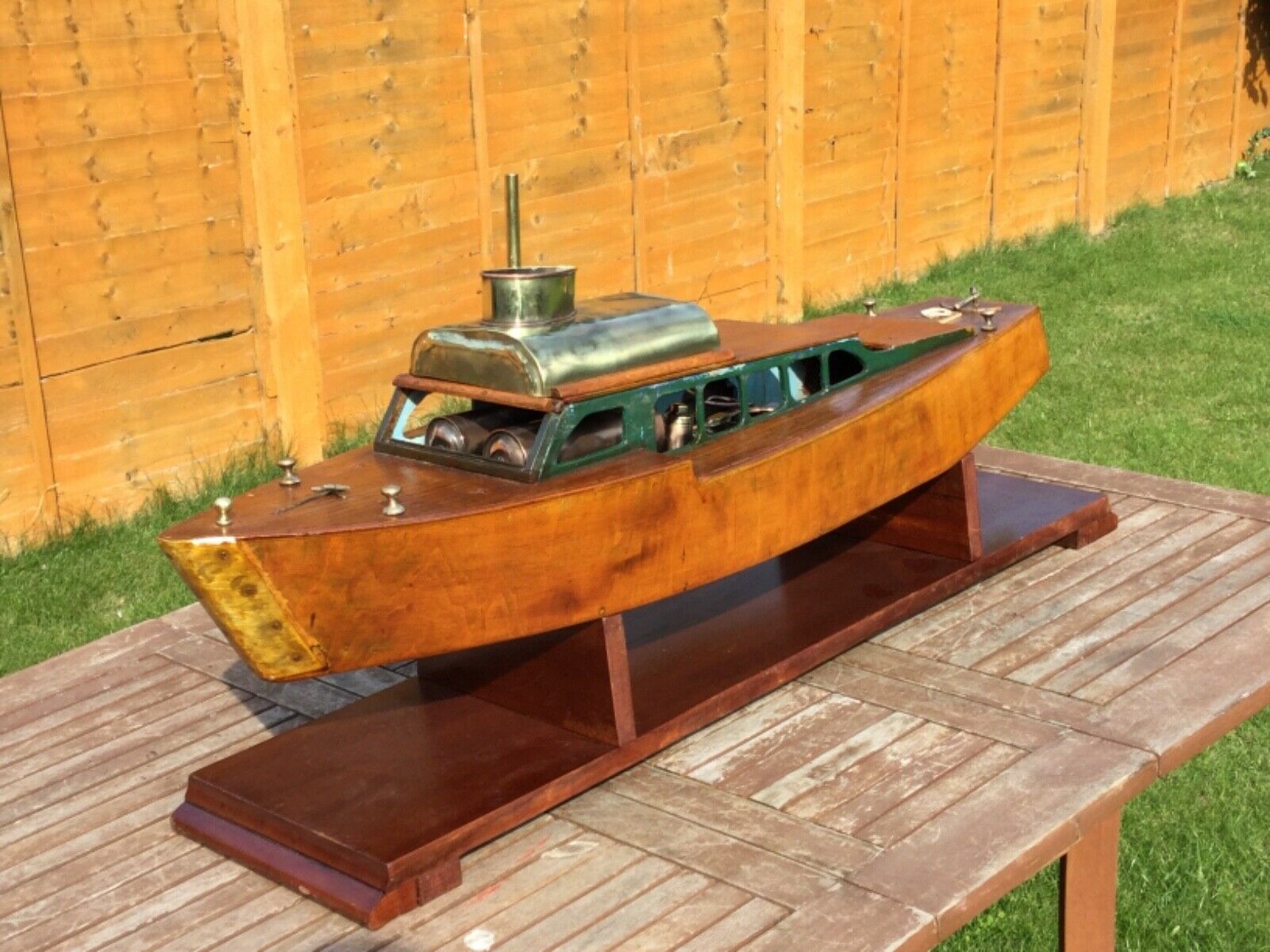
On habr, various interesting posts about how someone assembled another steam engine, or some kind of device powered by steam, are increasingly skipping. It is understandable, everyone at some point gets tired of hypnotizing the monitor, and the soul asks for the sea, adventure and romance, but with an engineering approach. What could be more romantic than a steam engine installed on a ship? Since there is no way to deploy a full-fledged shipyard in the asphalt jungle, you can have some fun on the table. Here I will tell you about some of my experiments, as well as what I managed to dig up in the vastness of the network.
Steam pulsating engine

Steam-pulsating boat from the cartoon "Ponyo on the Cliff" by Hayao Miyazaki
In English it is called the pop-pop engine. In Russian, I don’t know the exact name, the most accurate name will be “vaporous”, and I will use it. This type of steam engine is probably the best known and easiest to replicate at home. The principle of operation of which is based on the fact that water expands during boiling, then the steam goes through the tubes in the water, pushing the water out, cools, condenses, a vacuum occurs, vacuum and water is drawn back.
The designs of such engines are sea, there are even 3D-printed ones. I definitely have one, only the colors are different. But they couldn't get it to work.
Print Model The
video demonstrates how this engine works. And why is it called pop-pop (makes a distinctive sound).
I didn't really like this option, so I started my own experiments on this topic. And he began experiments, for a start he made a prototype from a tube with an inner diameter of 1 mm, and used a piece of board as a floating craft.

Surprisingly, this construction suddenly floated! I was shocked and did not believe that this was possible.
As a result, I realized that the idea was working and decided to make a normal design. I will not give the entire guide, I described it in detail here and here .
But in short, I bought a toy in the store - a plastic boat, and in the construction market there are copper air-conditioning pipes (it is better to use aluminum pipes of the same diameter - it is easier). He bent the pipes quite simply: he froze the water inside, and bent along the handle from the shovel.
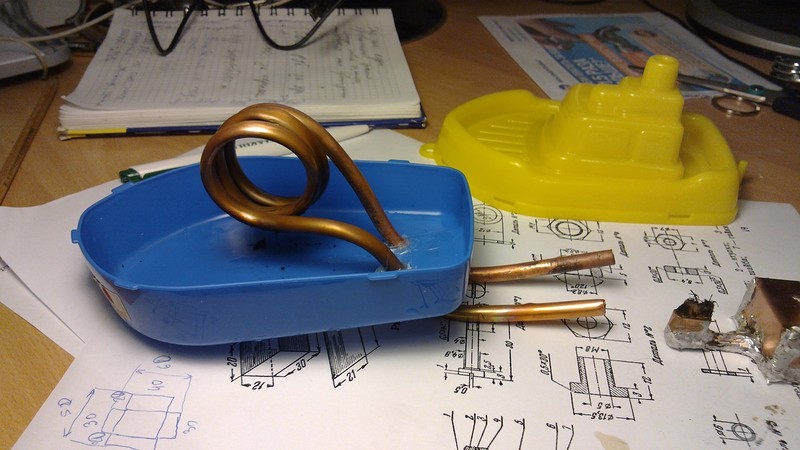
First floating model.
Made a spirit lamp for him.
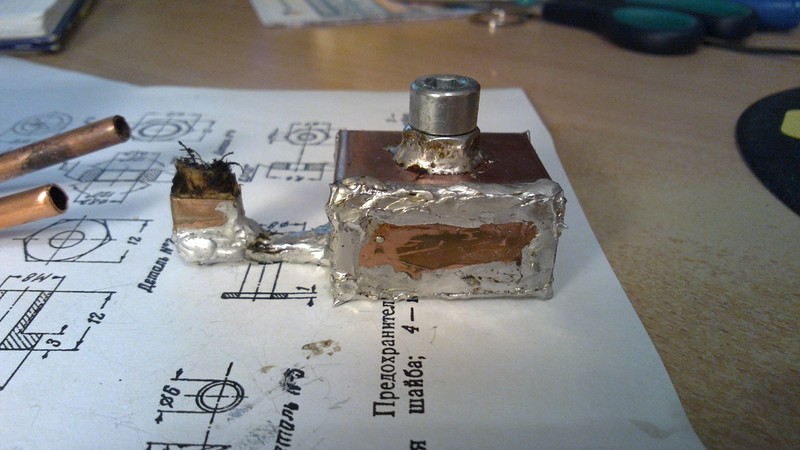
The spirit lamp turned out to be world-wide, and was used in many more models. Well, it's time to conduct the first sea trials. Checked various types of fuel and pipes.
After successful tests, the centering, weight distribution was done and the upper deck was dressed. So did the steering wheel, and the protection of the stove (so that the deck does not melt).
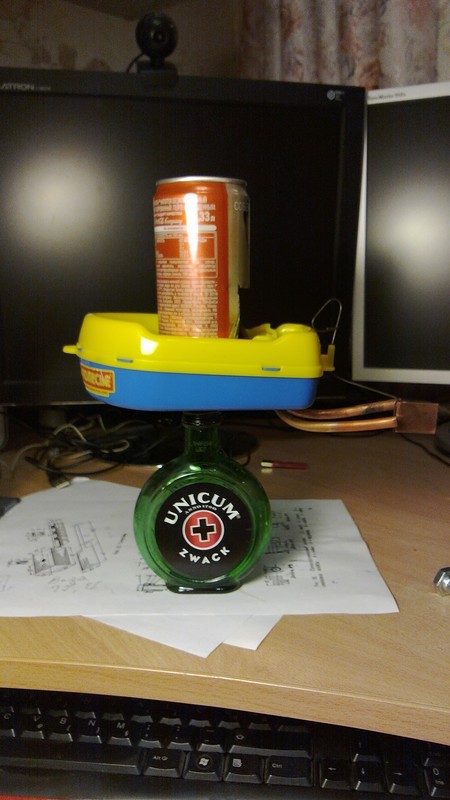
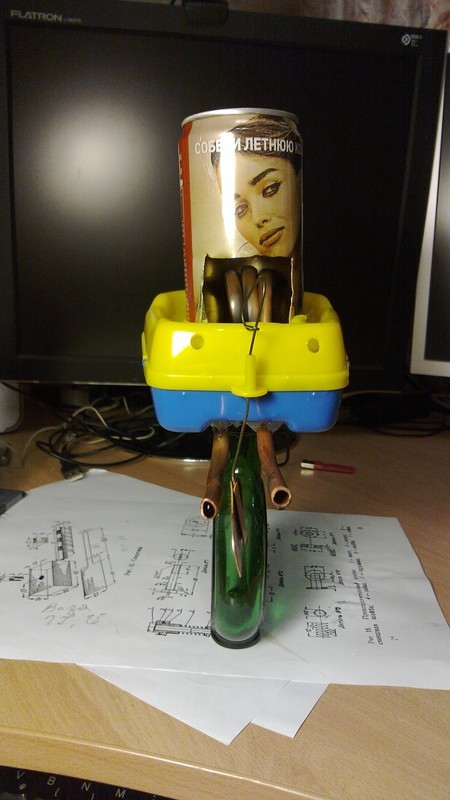
Well, and a video of the final tests.
If you think that steam pulsing engines are used in children's crafts, then no. This is a powerful industry, I personally have met even powerful mathematical calculations with shapes, volumes, tube lengths, etc., for the construction of the fastest and most efficient models.
Just look at the video of possible designs of such engines. I highly recommend this channel if you find the topic interesting. He has a lot of similar designs and ideas, there is something to do with your children in the evening;).
Whole drawings, mathematical calculations of the most successful designs are circulating on the Internet. Look, the topic is incredibly interesting and unusual.
There are absolutely incredible models that work on this principle. These photos are from a famous online auction.
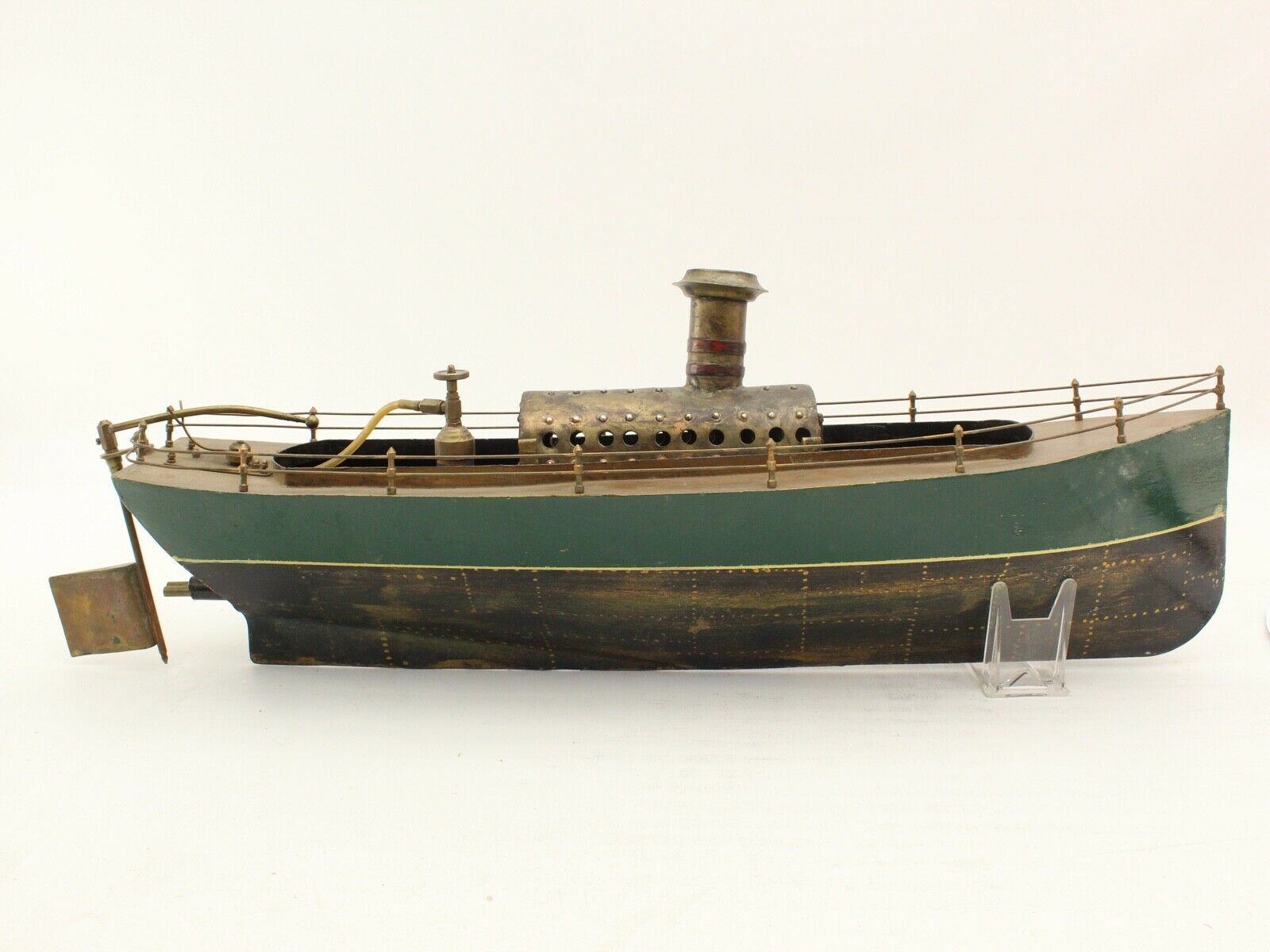
It may seem very strange, but this is also a model of a boat with a vapor-pulsing engine.
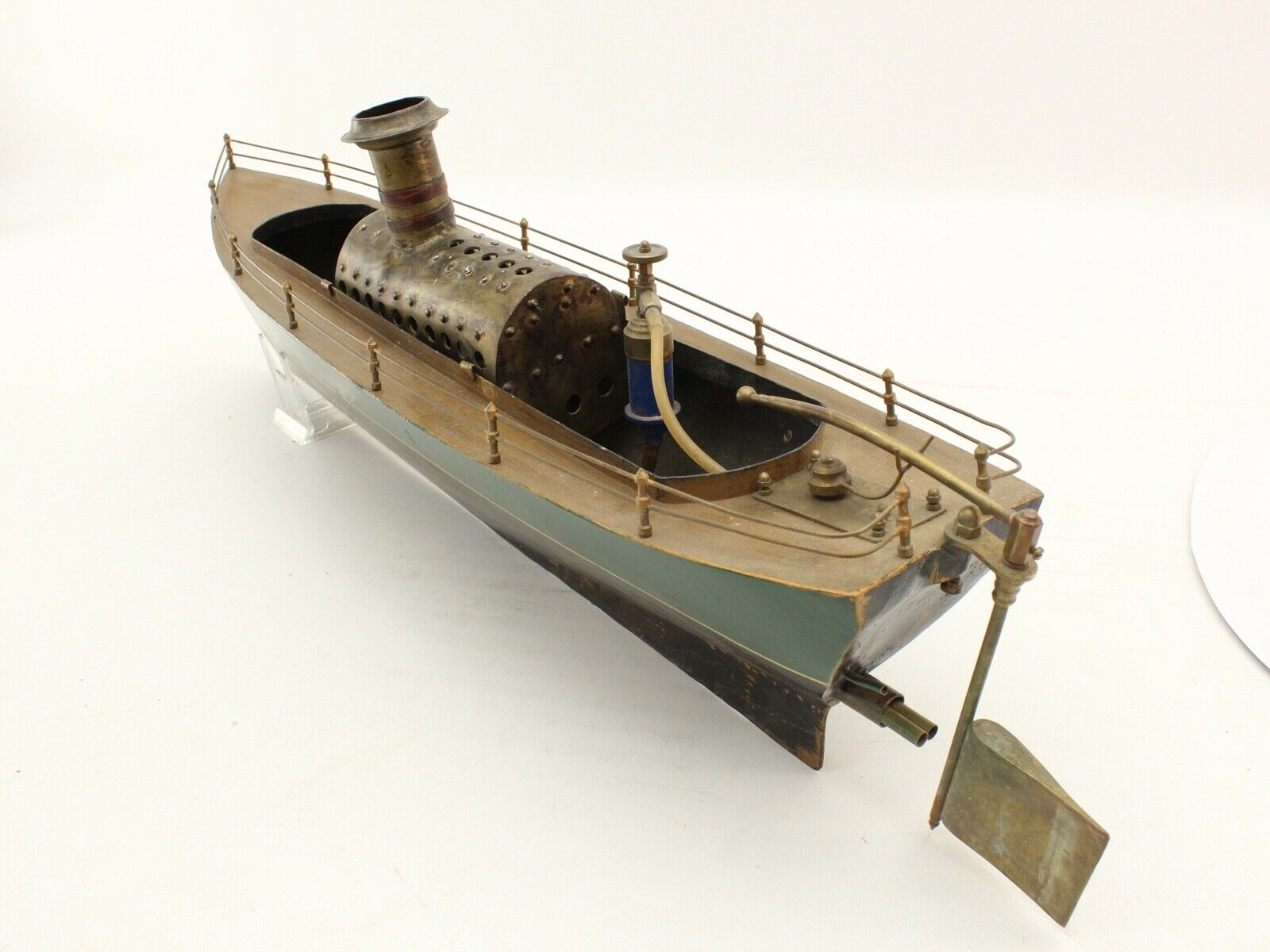
Two tubes in the back

Here is the engine itself (on the right), and on the left, the green one is an alcohol burner. So, don't think that this is a toy only for children.
Reciprocating Steam Models
Steam-pulsating engines, although very romantic and curious, are applicable only in modeling (even more precisely, only in ship modeling). And then, it will be more a toy than a real model. But we want to get a model that is closest to the real one, with a real piston steam engine.
If you go to a well-known internet auction and start monitoring there which models of boats with piston engines, as well as the engines themselves, are there, then you will be shocked. Personally, I go there like a museum and keep the most interesting ones. I already have several gigabytes of these photos for personal use. But I'll show you the most interesting ones.

Below is a domestic model of a steam boat.

And the latest model, a two-cylinder.
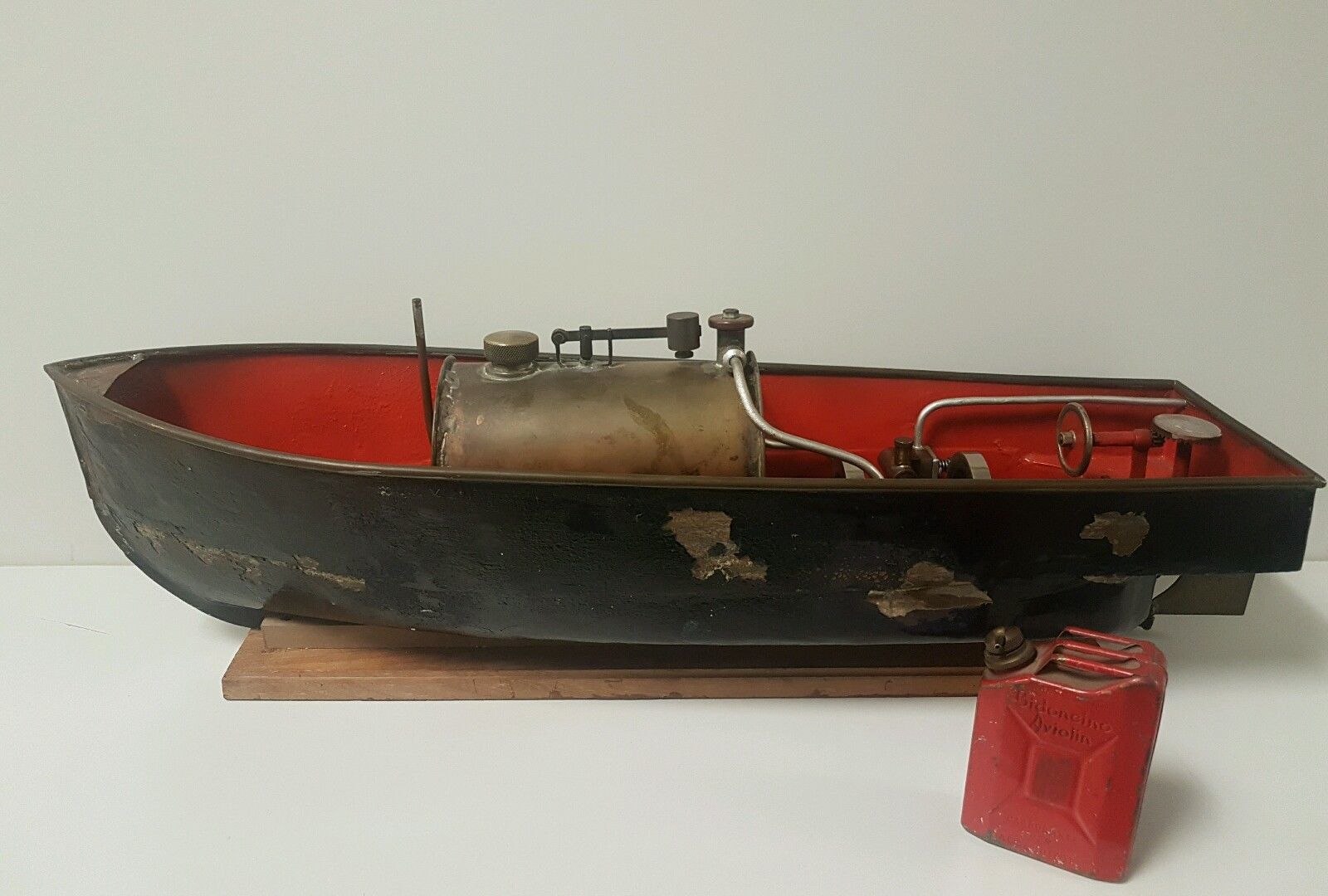

All these models have one thing in common: the absence of a steam distributor, and the presence of an oscillating cylinder. The swinging cylinder is only used in small models. Large steam engines use a spool valve. And this design also gives out "child modeling".
However, if you find out the cost of such models, then it turns out that it is not childish at all. Usually, the price tag starts at $ 1000. I will say right away that if you are thinking of making a model of a steamer yourself and saving money, then no, self-assembly will be much more expensive. Personally, I somehow almost bought a chic version of a steamer, for 60,000 rubles. And I think it would be a very good buy, but I didn't have time.
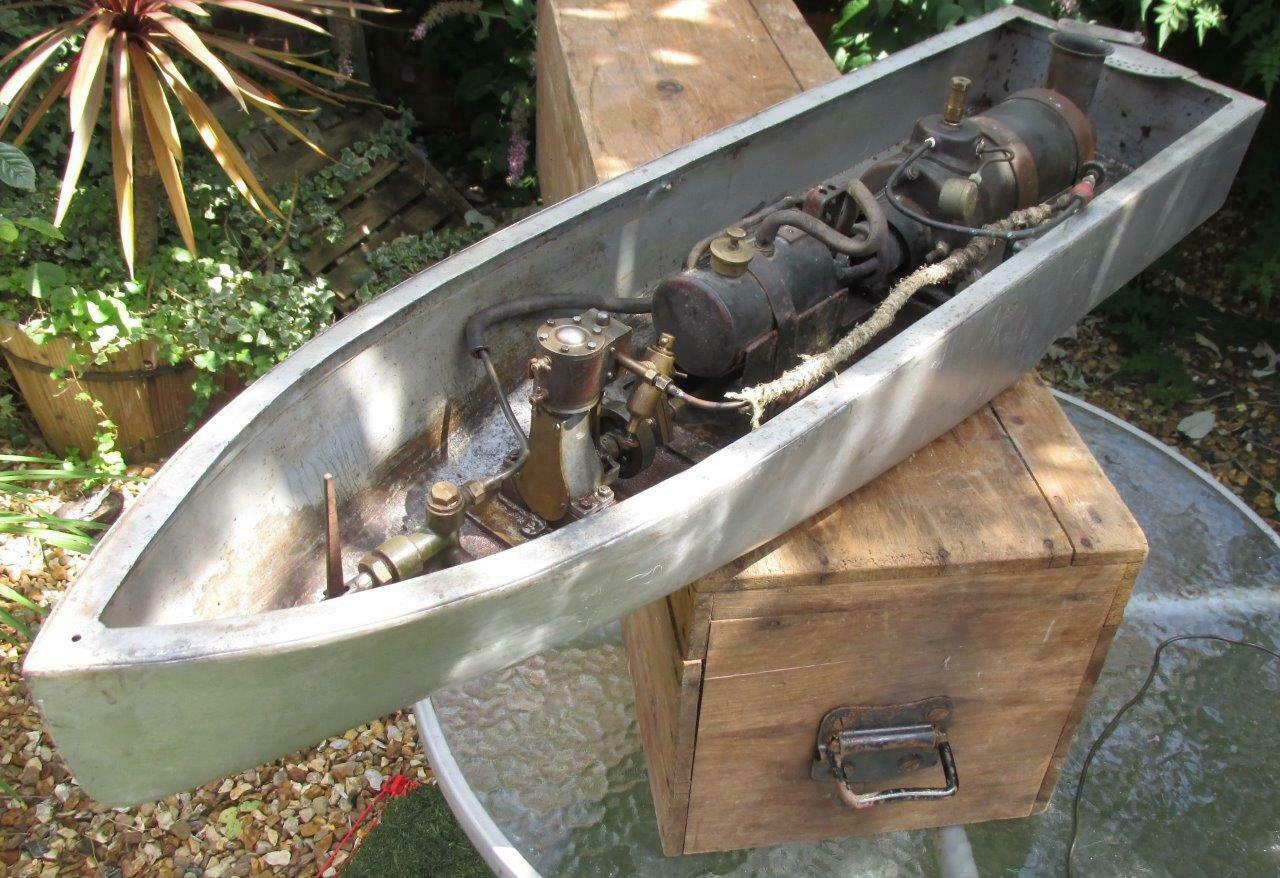
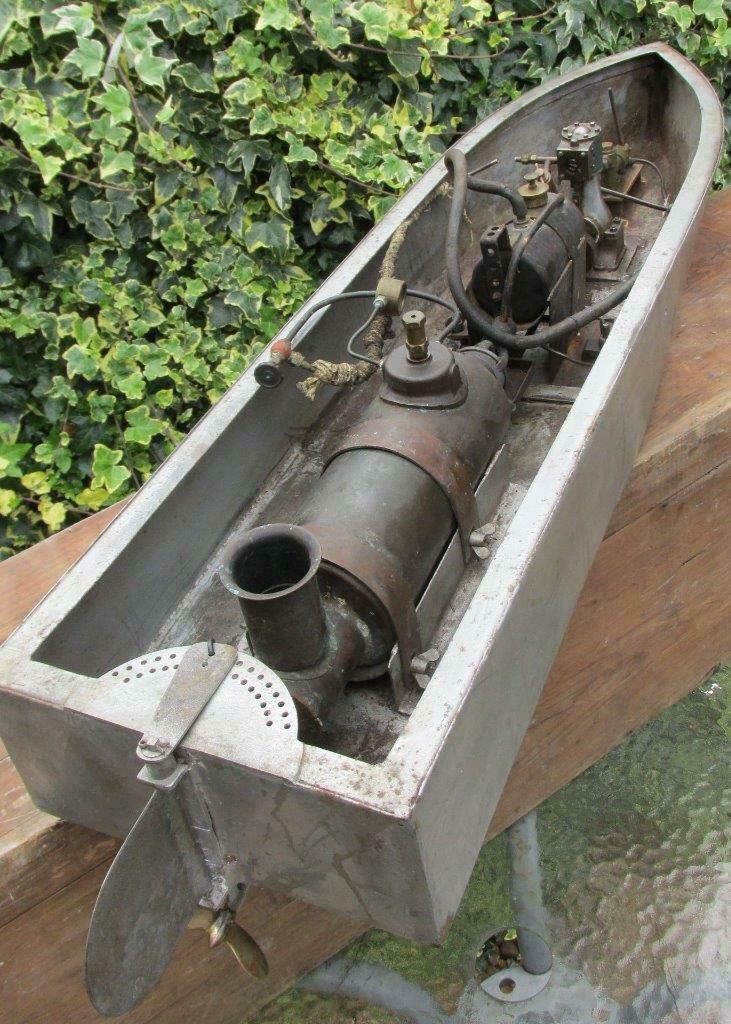
This is already a high-speed model, which has a Stuart Steam Engine, with spool steam distribution. Engine models are still in production and can even be bought. The water is heated by a gasoline burner. In general, this is a very cool model and making it of such quality in this amount will not work on its own, well, no matter how.
There are unique models of double-acting steam engines. Where the maximum steam energy is taken, with double expansion. The video shows that the cylinders have different diameters. The small diameter is the high pressure cylinder, the large diameter is the low one.
The principle of operation is shown in the following gif.
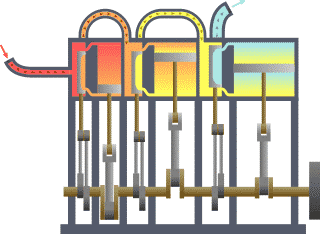
And you can read more about this on Wikipedia .
In fact, in the last five years, models of steam engines and steamers have been found less and less at auctions. And when they meet, their price flies to the inadequate heavens, in fact, with this money you can buy, without exaggeration, a car.
When I decided to buy an engine
The problem of the engine control unit is that they are worn out, can be sour and so on, so on. Without the skill of turning and without the appropriate tools, it is almost impossible to repair them.
But I will say right away that if you want to plunge into the world of steam engines, then you cannot do without a lathe.
For the beginner hobbyist, there are excellent Saito kits and engines on the market . The site, most likely, cannot be opened from Russia without a proxy. With what it is connected - I do not know. But these engines can be bought at an auction, and I happened to find it even in Russia along with a boiler.

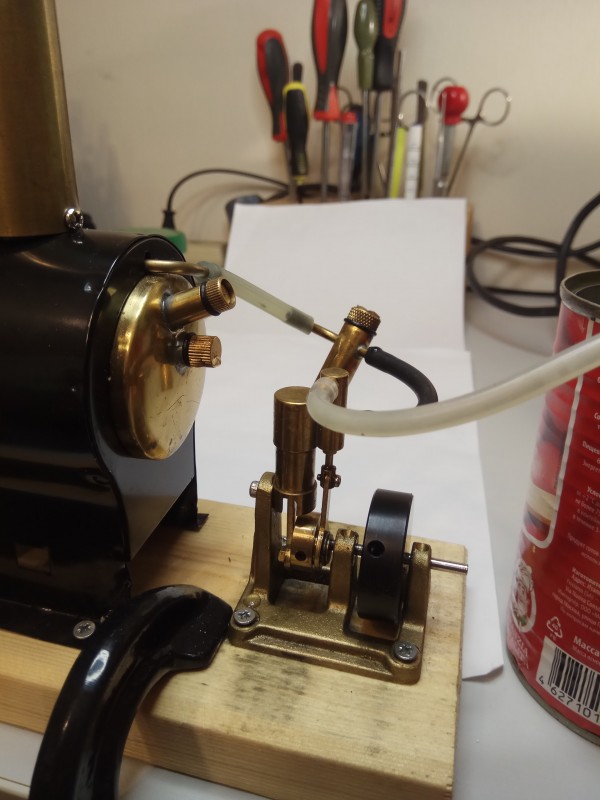
The engine itself.
I bought it a little bit, the former owner poured oil into the spirit lamp and had to be repaired after this abuse. But, nevertheless, the engine was working, the power reserve of the water in the boiler was about 15 minutes. The burning time of the spirit lamp is about 22 minutes, which is exactly enough to warm up the water, evaporate all of it and turn it off.

The spirit lamp is on.
It is extremely interesting to see how this engine works. I made the following movie especially for you.
Attentive spectators have probably noticed that I pour oil not only into the axis of rotation of the engine, but also into a special oil can. And as it turned out, despite the fact that there are a huge number of engineers in my social circle, as well as the fact that the steam engine is simply arranged, no one really could explain to me how this oiler works. In it, steam is mixed with oil, and such a steam emulsion already enters the engine, splashing everything around with dirty oil.
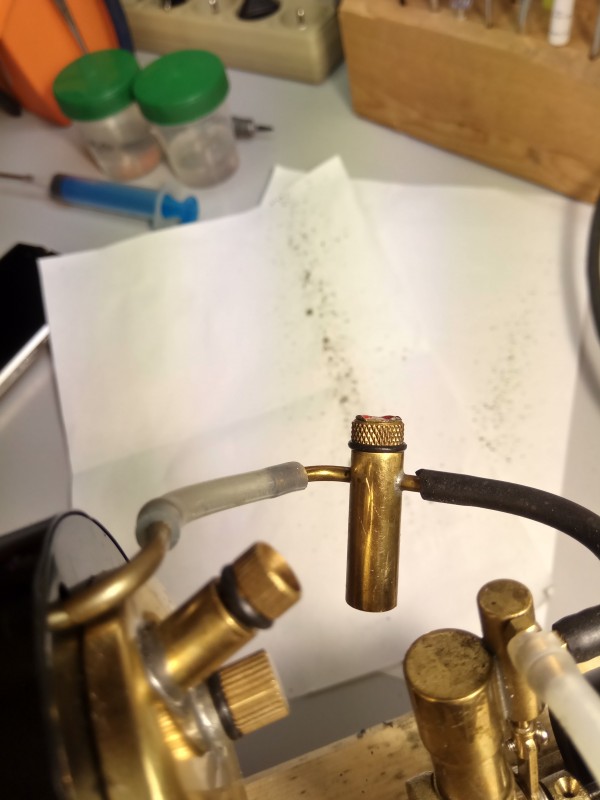
Oiler.
In fact, the device of such oil cans is elementary, but not obvious.
Usually, an oil trap is installed after the engine so as not to pollute the environment.
Just want to show a very curious project on this steam engine.
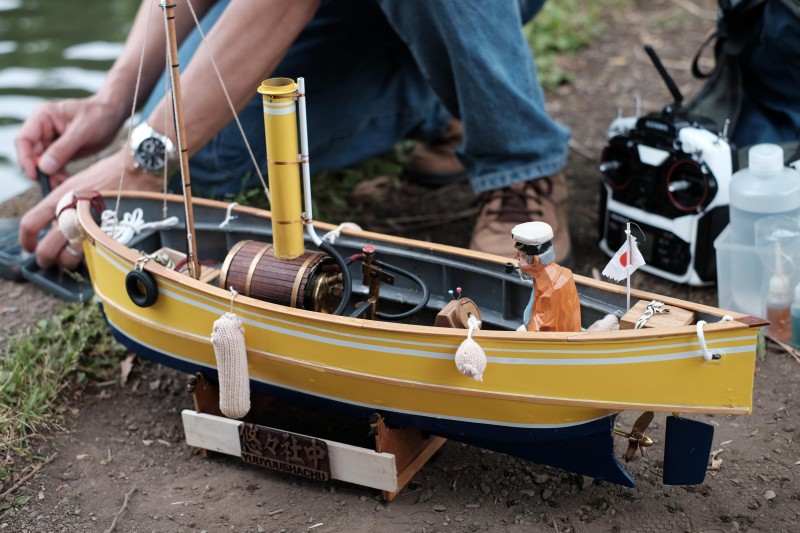
Recommended for review .
When you want to do it yourself
The steam engine, in spite of its simplicity, requires very high precision in the manufacture of parts. And all these home-made engines from "Young Technician" were practically unattainable in repeatability for children:
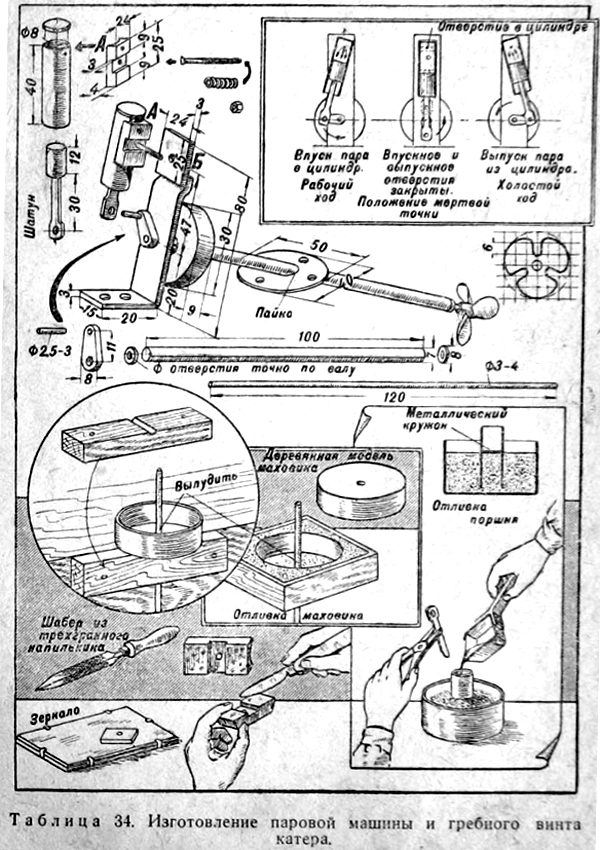
A typical domestic guide to creating an engine.
Picture taken from here.
I know a lot of people who tried to do this in childhood (including me), but he did not work for anyone. You should not think that only the editors of Soviet books mocked the children of that time, in the West there were also enough various instructions, for example, here.
But I found a very sensible instruction on how to repeat such an engine without a lathe, having a minimum set of tools and materials from the nearest building store.
Please note that these are three full-length videos, each half an hour long, and a total of 1.5 hours. Personally, I do not like the design of swing motors, as they are originally a toy, but they are very easy to repeat (haha, thrice).
conclusions
It seems to me that now some kind of renaissance of steam engine models has begun, and there is real interest in them. Even China reads Soviet books and makes engine models based on them. For example, we take the book by Y. Emelyanov "Marine Modeling" 1955 . Open on page 273 and see a wonderful picture.

Then we climb to the famous Chinese online store, and lo and behold! We meet there exactly the same engine!
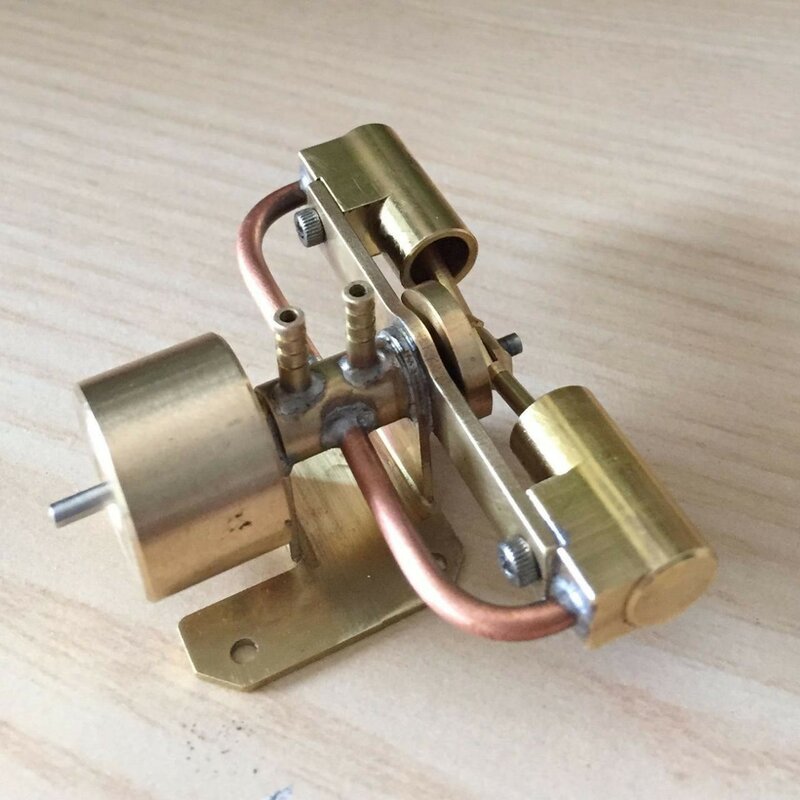
In fact, for all the archaic nature of steam engines, and their huge shortcomings, one cannot take away the fact that even today they do not lose their relevance. More than 70-80% of electricity is generated by archaic steam engines! Even advanced nuclear-powered ships are essentially steamers with a nuclear-powered boiler.
PS
For those who decide to go into models of steam engines, I want to say. You must remember that the efficiency of a large steam engine is already not great, then the efficiency of the model will be negligible. Too large losses for heating the metal and pipes. It often happens that everything works fine on compressed air, but on steam of the same pressure it does not work at all and nothing can be done. Therefore, if there is an opportunity, make the models larger, insulate the tubes and cylinders, and also do not be lazy, go to the library, there is an incredible treasure of technical literature on the topic. Personally, I sat in the Lenin Library for three weeks, just reading literature on the design of ship steam engines. But that's a completely different story.

